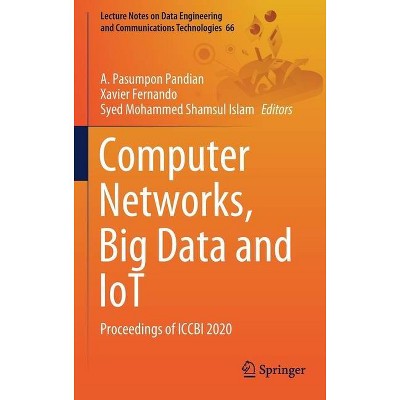Guide to Vulnerability Analysis for Computer Networks and Systems - (Computer Communications and Networks) (Hardcover)

Similar Products
Products of same category from the store
AllProduct info
<p/><br></br><p><b> Book Synopsis </b></p></br></br><p>This professional guide and reference examines the challenges of assessing security vulnerabilities in computing infrastructure. Various aspects of vulnerability assessment are covered in detail, including recent advancements in reducing the requirement for expert knowledge through novel applications of artificial intelligence. The work also offers a series of case studies on how to develop and perform vulnerability assessment techniques using start-of-the-art intelligent mechanisms.</p>Topics and features: provides tutorial activities and thought-provoking questions in each chapter, together with numerous case studies; introduces the fundamentals of vulnerability assessment, and reviews the state of the art of research in this area; discusses vulnerability assessment frameworks, including frameworks for industrial control and cloud systems; examines a range of applications that make use of artificial intelligence to enhance the vulnerability assessment processes; presents visualisation techniques that can be used to assist the vulnerability assessment process.<p></p><p></p><p></p><p></p><p></p><p></p><p></p><p>In addition to serving the needs of security practitioners and researchers, this accessible volume is also ideal for students and instructors seeking a primer on artificial intelligence for vulnerability assessment, or a supplementary text for courses on computer security, networking, and artificial intelligence.</p><p></p><p></p><p/><br></br><p><b> From the Back Cover </b></p></br></br><p>This professional guide and reference examines the challenges of assessing security vulnerabilities in computing infrastructure. Various aspects of vulnerability assessment are covered in detail, including recent advancements in reducing the requirement for expert knowledge through novel applications of artificial intelligence. The work also offers a series of case studies on how to develop and perform vulnerability assessment techniques using start-of-the-art intelligent mechanisms.</p> <p><b>Topics and features: </b></p> <p></p><ul><li>Provides tutorial activities and thought-provoking questions in each chapter, together with numerous case studies<br></li><li>Introduces the fundamentals of vulnerability assessment, and reviews the state of the art of research in this area<br></li><li>Discusses vulnerability assessment frameworks, including frameworks for industrial control and cloud systems<br></li><li>Examines a range of applications that make use of artificial intelligence to enhance the vulnerability assessment processes<br></li><li>Presents visualisation techniques that can be used to assist the vulnerability assessment process<br></li></ul><p></p><p></p> <p></p> <p></p> <p></p> <p></p> <p>In addition to serving the needs of security practitioners and researchers, this accessible volume is also ideal for students and instructors seeking a primer on artificial intelligence for vulnerability assessment, or a supplementary text for courses on computer security, networking, and artificial intelligence.<br></p><p></p> <p><b>Dr. Simon Parkinson</b> is a Senior Lecturer in Computer Science in the School of Computing and Engineering, University of Huddersfield, UK. <b>Prof. Andrew Crampton</b> is a Professor of Computational Mathematics in the School of Computing and Engineering, and the Associate Dean for Teaching and Learning at the University of Huddersfield. <b>Prof. Richard Hill</b> is a Professor of Intelligent Systems, the Head of the Department of Informatics, and the Director of the Centre for Industrial Analytics at the University of Huddersfield. His other publications include the successful Springer titles <i>Guide to Security Assurance for Cloud Computing</i>, <i>Big-Data Analytics and Cloud Computing</i>, <i>Guide to Cloud Computing</i>, and <i>Cloud Computing for Enterprise Architectures</i>.</p><p></p><p/><br></br><p><b> About the Author </b></p></br></br><p><b>Dr. Simon Parkinson</b> is a Senior Lecturer in Computer Science in the School of Computing and Engineering, University of Huddersfield, UK.</p><p><b>Prof. Andrew Crampton</b> is a Professor of Computational Mathematics in the School of Computing and Engineering, and the Associate Dean for Teaching and Learning at the University of Huddersfield.</p><p><b>Prof. Richard Hill</b> is a Professor of Intelligent Systems, the Head of the Department of Informatics, and the Director of the Centre for Industrial Analytics at the University of Huddersfield. His other publications include the successful Springer titles <i>Guide to Security Assurance for Cloud Computing</i>, <i>Big-Data Analytics and Cloud Computing</i>, <i>Guide to Cloud Computing</i>, and <i>Cloud Computing for Enterprise Architectures</i>.<br></p>
Price History
Price Archive shows prices from various stores, lets you see history and find the cheapest. There is no actual sale on the website. For all support, inquiry and suggestion messagescommunication@pricearchive.us




















